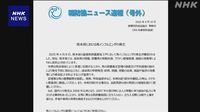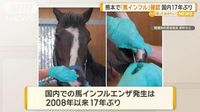On April 11, 2025, Kumamoto Prefecture announced a significant outbreak of equine influenza at three farms in the northern part of the region. This marks the first occurrence of the virus in Japan in 17 years, with the last outbreak recorded in 2008. The prefecture confirmed that the infected horses exhibited symptoms such as fever, cough, and nasal discharge, prompting immediate action to contain the spread of the virus.
The outbreak was identified following reports from the farms indicating that horses were showing respiratory symptoms. A test conducted by the prefectural livestock hygiene service confirmed the positive results on April 8, 2025. In response, Kumamoto Prefecture is implementing measures to isolate the infected horses and restrict the movement of other horses from the affected farms.
The Light Horse Disease Prevention Council has also been involved, announcing on April 10 that they are actively working to prevent the spread of the virus through various measures. These include isolating infected horses, restricting the movement of horses, providing vaccination guidance, and disinfecting facilities at the farms.
Officials have reassured the public that equine influenza does not pose a risk to humans or other animals. "The virus is transmitted from horse to horse through droplets and poses no risk of infecting humans or other animals," a prefectural spokesperson stated. They emphasized that while the infected horses will require isolation, they are not legally mandated to be culled, as is the case with other infectious diseases like avian influenza.
Infected horses typically recover within two to three weeks, although there is a risk that foals with lower immunity may not survive. The current outbreak is particularly concerning given the historical context; in 2007, a similar outbreak among racehorses led to the cancellation of many horse racing events across the country.
According to statistics from the previous year, Kumamoto Prefecture is home to 97 horse farms, with around 3,304 draft horses raised for consumption. Prefectural officials believe that the ongoing situation will not significantly impact the market for horse meat, as inspectors ensure safety during the processing stages.
The prefecture has urged farmers to practice caution, including disinfection protocols and monitoring the health of their horses closely. They are also conducting interviews with farmers to trace the infection's route and ensure that no infected horses enter the market.
This outbreak serves as a reminder of the potential for infectious diseases to impact livestock industries and highlights the importance of biosecurity measures in preventing the spread of such viruses. As the situation develops, officials are committed to keeping the public informed and ensuring that the necessary precautions are in place to protect both the horses and the broader community.
In the wake of this outbreak, it is crucial for horse owners and farmers to adhere to the guidelines provided by the prefecture and the Light Horse Disease Prevention Council. The emphasis on isolation and disinfection is vital in curbing the spread of the virus and safeguarding the health of the remaining horse population.
While the current outbreak is concerning, the swift response from local authorities and the engagement of the farming community are critical in managing the situation effectively. The prefecture continues to monitor the health of the horses and the effectiveness of the implemented measures, ensuring that the risk remains low for both humans and other animals.
As Kumamoto moves forward, the focus will remain on maintaining biosecurity and enhancing the resilience of the local horse farming community against future outbreaks. The collaboration between government officials, farmers, and health organizations will be vital in navigating this challenge and ensuring the safety of all involved.









